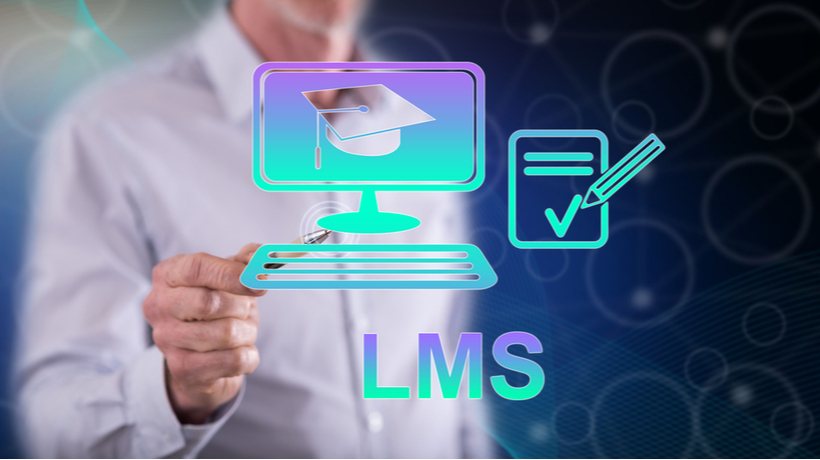What Should You Look For In Your LMS For Nonprofits?
Aside from operational costs, most of the NGO’s resources are devoted to the cause. And this shift in expenditure creates a unique set of software requirements for the average nonprofit organization. So, what functionalities facilitate these needs? Here are some top LMS features to look for when investing in nonprofit training software.
7 Essential LMS Features For Nonprofits
1. Collaboration Tools
Many nonprofits are initiated and funded on a global scale, which involves distant partners. This means there will be lots of meetings with participants in different locations. Sometimes, even the time zone is different. Your LMS, therefore, needs real-time, high-definition video and audio conferencing tools. It also helps if there are chat rooms and instant messaging forums. Ideally, these are integrated with the video and audio feed. So, collaborators can take notes and type comments in the middle of the feed.
2. Training Portals
Nonprofit activities have multiple levels of training. Cyclic volunteers have to be onboarded and acclimatized. Employees undertake ongoing courses related to their jobs. Sometimes, the beneficiaries themselves take certain courses. These may include adult literacy and vocational training, or travel prep for candidates who may go abroad for study, asylum, or job placement. All these courses are cheaper and more efficient when they’re carried out online. LMS can be used to proffer these courses and to create them as well.
3. Built-In Libraries
Think of a nonprofit that helps underprivileged youngsters seek education opportunities abroad. Or one that helps locals build quality houses, dig boreholes, or create sustainable income streams. The students need reports of their academic performance and background. Areas without water may require maps and geological data showing good digging spots. Funded economic projects have to routinely write expense reports, P&L sheets, supply lists, and much more. These activities are easier if your LMS for nonprofits enables users to evaluate relevant documents. Ideally, you want a system that allows users to quickly search for keywords and/or organize the content by topic/task.
4. Certification
Many NGOs attract students seeking extracurricular credits. This doesn’t mean they’re insincere or that their assistance is substandard. It just means they need tangible proof of their time at the organization. Similarly, local trainees are motivated by the idea of something that displays their efforts. Aside from personal validation, it can help their later undertakings, like job hunts or school applications. Hundreds or maybe thousands of trainees and volunteers go through the organization. It makes financial sense to draft and print certificates in-house, so your LMS needs the ability to do that. In-house diploma design also facilitates deeper customization. You can create certificates for individual courses, skills, and functions. Make them specific for better oversight, such as translators, educators, caregivers, arts vs. science vs. technical studies, etc. Another perk is being able to uphold organizational standards. If someone doesn’t earn their certification, you can send notifications or follow up to determine why and if they need additional support.
5. Responsiveness
In some ways, the NGO space is as hectic as a Wall Street trading floor. There are a million things to do in a limited time. Budgets are stretched, and multitasking is standard. In this high-pressure setting, you don’t want to lose time figuring out how the LMS works. Also, many of these organizations operate on limited infrastructure. There are limits to electricity, internet connectivity, or even basic utilities. In these settings, your LMS needs to be mobile-responsive so that everyone has access to training materials.
6. Customizable Reporting
You must have a way to track engagement and completion stats. This allows you to pinpoint areas for improvement and enhance training personalization. As such, LMS for nonprofits should have customizable reporting so that you can focus on metrics that matter to your organization or even specify who receives which reports, how frequently, and the best delivery method.
7. Donation Tabs (eCommerce Features)
Some of us are so used to having the web shape our experience that we need nudges and prompts, like the famed CTA (call to action). So, even after spending a while exploring a nonprofit platform, we may need some direction regarding the next step. Your LMS platform should therefore have clickable donor portals. They should enable real-time contribution options and allow the donor to pay on the spot, preferably with one click. They may not if they have to go elsewhere to complete the transaction or follow too many steps.
Conclusion
Are nonprofit LMS platforms that distinguishable from regular corporate software? In some ways, yes. The basic tools are the same, but their application isn’t. Which essentials does your NGO LMS require? Collaboration features to connect with distant donors and partners, tailored reporting systems, the ability to produce and print certifications, and offline accessibility. Finally, it should have an active, on-site “donate” button that takes a maximum of three clicks to complete.
Are you thinking about launching an LMS to increase donations and keep your volunteers in the know? You can start your search using our online directory and narrow down your top options. With a built-in filter, you can select the features, pricing model, deployment type, and licensing options you’re looking for.

